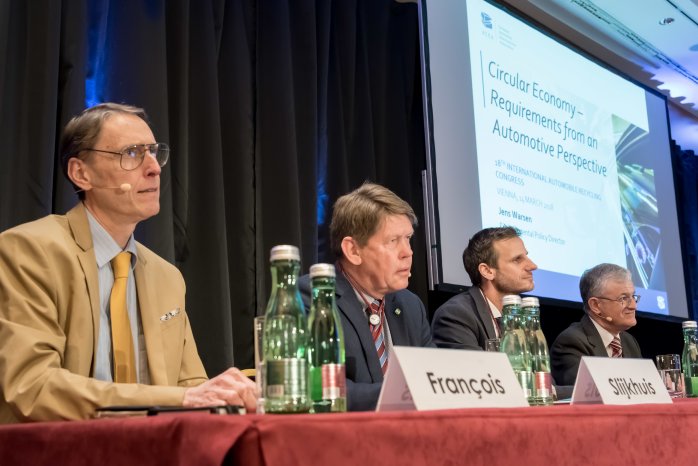This is good news for the recycling industry, Olivier François, Market Development Officer at Galloo Recycling, said at the International Automobile Recycling Congress IARC 2018 in Vienna. Nevertheless, the EU's plastics strategy is a major challenge. Currently, only six per cent of the plastics put on the market are being recycled. This corresponds to a recycled quantity of 2.94 million tonnes. However, if the EU plastics strategy becomes a reality, a total of 10 million tonnes of plastics should be recycled by 2025 – an increase of around seven million tonnes. All this is to be achieved through voluntary commitments by industry.
Julien van Damme, Recycling Manager at Honda Motor Europe, emphasized that automotive manufacturers have long been focusing on the development and recovery of recyclable components. Meanwhile, the technologies have been improved to the degree that not only metals but also plastics can be recovered and sorted by type. These recycled plastics are comparable to virgin material.
The problem, however, is that the legislature also partially hinders the use of recycled materials, van Damme said. Strict rules on the presence of certain chemicals would ensure that certain plastics, including those from end-of-life vehicles, are no longer allowed to be used. This is a waste of valuable materials, which in the worst case would have to be replaced by fossil raw materials.
Chris Slijkhuis of the Austrian Müller-Guttenbrunn Group argued along similar lines. The total amount of plastics used in electronics and vehicles amounts to around 8 million tonnes, he told the IARC 2018. Of this amount, around 65 per cent consists of recyclable components that enable technical plastics to be produced again. The remainder of this solid plastic waste fraction consists of a wide variety of plastics that to date are not being recycled. These plastics include those with Brominated Flame Retardants (BFRs), which can be found in both end-of-life vehicles (ELVs) and waste from electronics (WEEE) in parts that are often located near heat sources (such as engines and power supplies). These plastics containing BFRs are separated and incinerated in order to eliminate these BFRs, since some of them are considered to be Persistent Organic Pollutants (POPs).
However, currently a discussion is ongoing to reduce the thresholds of these POPs. The problem is that the threshold risk is to be lowered to such an extent that the recycling of engineering plastics from WEEE and ELVs would be impossible. "A decision in this direction would be devastating for the recycling targets of WEEE and ELVs that are set within the EU”, Slijkhuis warned.




